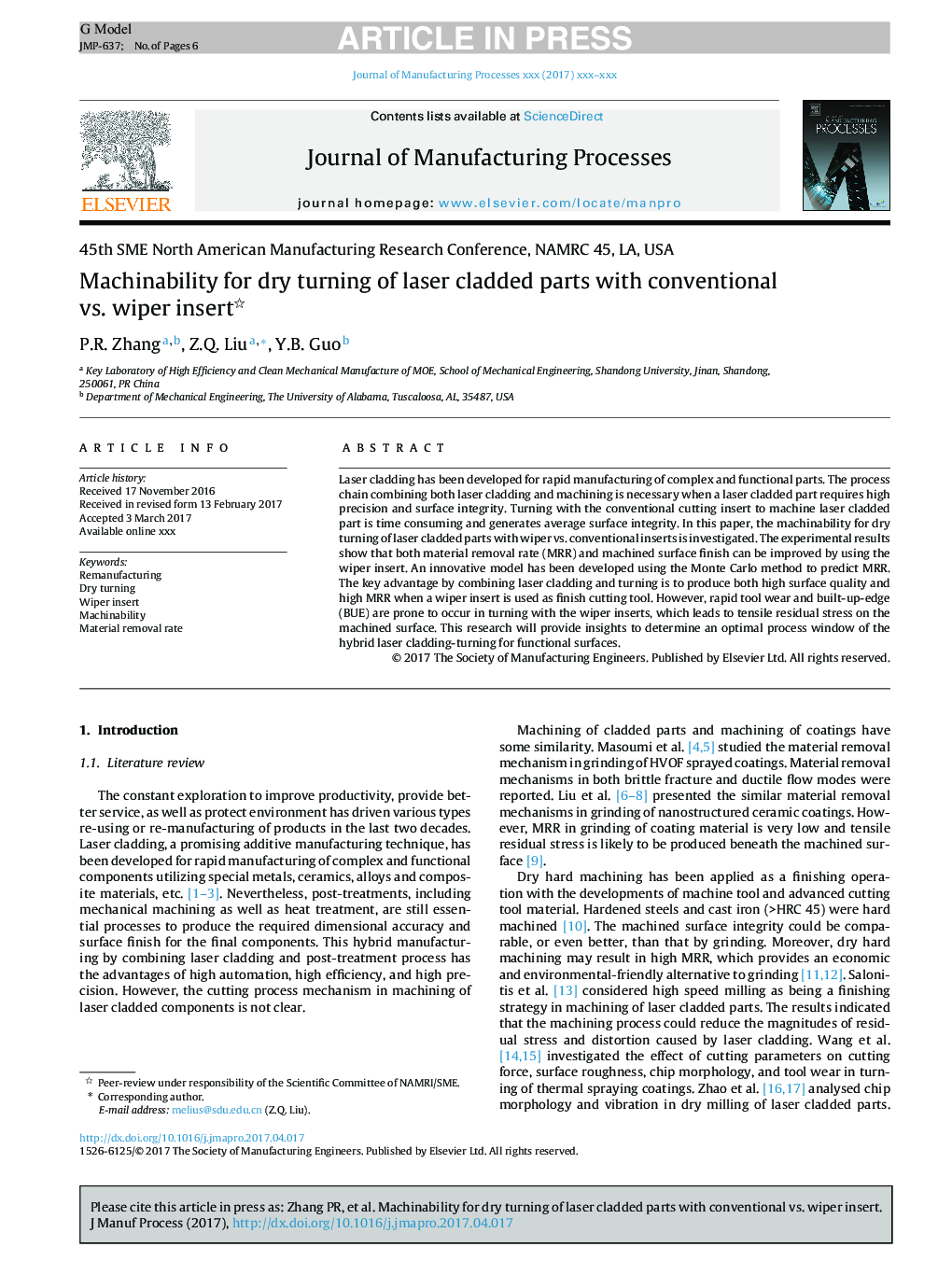| Article ID | Journal | Published Year | Pages | File Type |
|---|---|---|---|---|
| 5469255 | Journal of Manufacturing Processes | 2017 | 6 Pages |
Abstract
Laser cladding has been developed for rapid manufacturing of complex and functional parts. The process chain combining both laser cladding and machining is necessary when a laser cladded part requires high precision and surface integrity. Turning with the conventional cutting insert to machine laser cladded part is time consuming and generates average surface integrity. In this paper, the machinability for dry turning of laser cladded parts with wiper vs. conventional inserts is investigated. The experimental results show that both material removal rate (MRR) and machined surface finish can be improved by using the wiper insert. An innovative model has been developed using the Monte Carlo method to predict MRR. The key advantage by combining laser cladding and turning is to produce both high surface quality and high MRR when a wiper insert is used as finish cutting tool. However, rapid tool wear and built-up-edge (BUE) are prone to occur in turning with the wiper inserts, which leads to tensile residual stress on the machined surface. This research will provide insights to determine an optimal process window of the hybrid laser cladding-turning for functional surfaces.
Related Topics
Physical Sciences and Engineering
Engineering
Industrial and Manufacturing Engineering
Authors
P.R. Zhang, Z.Q. Liu, Y.B. Guo,
